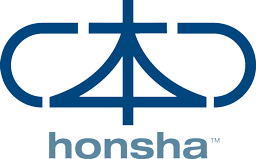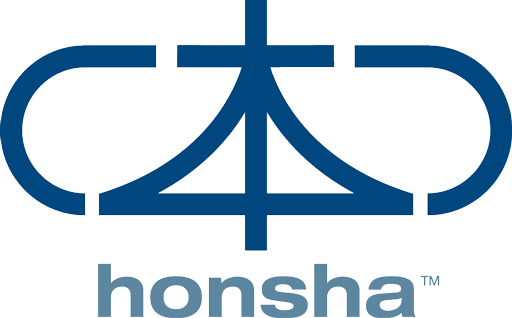
In 1990, in the book “The Machine That Changed the World” (Daniel T. Jones; James P. Womack), the term Lean Manufacturing appeared for the first time to represent and summarize the management model adopted by emerging and innovative Japanese companies. However, even 20 years after the term Lean was introduced and exhaustively studied, there is great difficulty in implementing, maintaining and expanding the system with the same effectiveness demonstrated by Japanese companies.
What restricts the potential of the Lean System not only in industry, but also in the most diverse business segments is, in my opinion, the superficial definition or understanding of the focus of the Lean System: Excellence in Value Management. When we take Value Management as the company’s main focus, we can easily extrapolate the application of the Lean System from the traditional manufacturing approach to any and all areas of activity. To reinforce the understanding of the definition I’m presenting, I appeal to history: in 1950, Japanese companies devastated by the Second World War found themselves facing a major problem: they needed to generate more money to survive in the market, but to do so they needed more money to invest in rebuilding and modernizing their industry.
It was then, with limited resources and unlimited problems, that large Japanese industries re-evaluated existing models and began to develop a management system using as few resources as possible in order to obtain competitive products on the market and achieve the goal of overcoming the crisis.
Within this guideline, the concept of waste was emphasized, and in order to disseminate the concept and at the same time maintain the focus of activities, wastes common to the production chain were defined, and thus the so-called 7 wastes that we know today were born: Inventory, Defects, Waiting, Movements, Transportation, Overproduction, Unnecessary Processing.
These wastes ended up shaping what would become Lean Culture. Today, it is common to summarize the definition of Lean as the elimination or reduction of these 7 wastes, which is definitely true, and is even a good definition. However, I believe that this understanding is somewhat superficial, especially when it comes to other business segments or even when it comes to ingraining the concepts and techniques of Lean, facilitating the process of maintaining the achievements obtained through its implementation. That’s why I invite everyone to think and reflect more about it by asking themselves: what is waste?
The definition found by Japanese companies and approved for over 70 years in practice, defines waste as any cost (resources, material, effort, investment, etc.) inherent in the process but which does not generate or add value. Note that before defining waste, Japanese companies first had to identify and understand what value was. We are then faced with another question: what is value?
A very common and intuitive definition of value is how much you pay for a certain product or service. But let’s stimulate our thinking and evaluate this initial definition using the value of a watch as an example. How much is a wristwatch worth? In a quick search we’ll find prices that can vary from R$100.00 for a T brand watch to R$10,000.00 for an R brand watch, both of which are technically good products, made of analog markers with basic functions, showing the day, the hour, the minutes and the seconds. In other words, they practically look the same, differing only in the brand. So what’s behind this price difference? What value is attributed to the T brand and the R brand?
In order to understand this question, I believe that the definition we found initially is not enough. So I bring you the definition of value presented by James T. Womack in his book “Lean Solutions”: “Value is how much someone is willing to pay for the solution to their problem.”
The problem that motivates a person to buy a T watch is simply knowing the time, which requires nothing more than the basic functionality of a watch; whereas a person who buys an R watch is motivated by a question of image or social status that goes far beyond the costs of producing the watch itself; there is a whole process of generating a connection between the brand and success and sophistication, and this is part of the value attributed to the R brand, in other words, although the technical function of the watch is the same, the definition of value is different.
The reason is that the identification of value within industry and manufacturing is intuitive, a product that has already been conceived is the value produced, and waste has already been extensively studied and validated, there is no discussion of the definition of the seven wastes because they are much more visible. However, in an administrative process, the value is not so obvious and in this case I recommend understanding the value well so that you can then focus on waste or even define it.
To reinforce my thesis, let’s look at an example of the waste of waiting. Waiting for an employee is a waste that is unlikely to be seen as adding value, but when I go to restaurants, I’m actually willing to pay for a few minutes of waiting and attention from the waiter when I’m evaluating the menu, so in this case, the wait for the restaurant employee is adding value for me as a customer.
You see, the problem that a restaurant sets out to solve by offering the service of a waiter is not just to register and take a customer’s order, it’s also to help them make their choice by clarifying doubts about the menu and offering options from the house that will go well with their other choices, increasing the customer’s pleasure and satisfaction during their visit to the restaurant. Therefore, being available is part of the value that a waiter offers the customer; simply implementing techniques to eliminate this availability time as a waste could result in customer dissatisfaction, which will most likely become an argument that the Lean management system does not apply in an environment such as a restaurant.
What I want to conclude with the facts I’ve presented is that, in general, the implementation of Lean is not successful not because the techniques, which are more than well-established, don’t work in a particular process or business, but because the approach to these techniques has been inappropriate. It’s not uncommon for companies to set the use of Lean techniques as goals, forcing them to be applied even if they aren’t necessary, when in fact the techniques are means by which objectives are achieved, and can never be seen as goals.
What I observe is that there is a tendency to believe that Lean consists of using known techniques; and many define it as a toolbox from which we choose the one we need, however, I was never forced by any of my senseis to use a technique for no reason or that I couldn’t create my own technique to eliminate a specific waste!
There is a gap in the understanding of what the Lean management system is; the management system that I experienced within Toyota is not simply made up of techniques, but by focusing on a complete understanding of value and what waste is, and on the tireless journey of eliminating waste and maximizing value generation within the production chain, in other words, in the pursuit of excellence in value management, after all, Lean is about value!
Renato is a mechanical engineer with a master’s degree in Manufacturing and Logistics Management (Unicamp). His specialization in Lean came from Toyota in Brazil, where he trained suppliers to comply with TPS requirements. He led the Lean implementation at Delphi Thermal and Interior in South America and was recognized by Autodata magazine as an important implementer, leading the Jaguariúna plant to be the most productive and profitable company per square meter among Delphi Thermal companies. Currently based in Indianapolis IN, USA, Renato leads the implementation of Lean at CTB/McGraw Hill. He has also been extensively involved in the exchange of Lean knowledge with organizations in Chile, Hungary, France, Poland and Portugal.
Click here to read other articles from Honsha.ORG.
Follow us on YouTube.





